
| Atlanta Campaign Home |
| Civil War Album Home |
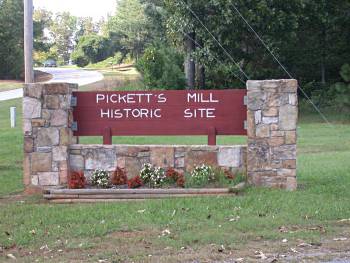 |
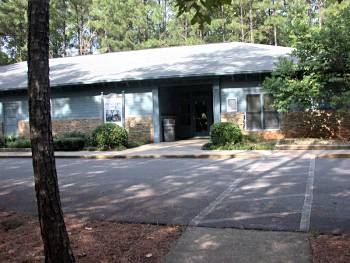 |
|
|
(10-02)
Entrance to Pickett's Mill Historic Site. It is the only Atlanta
campaign battlefield owned by the state and is one of the best preserved
battlefields in the nation. Access is entirely by trail, and visitors
can follow original war-time roads and view the entire battlefield in
detail |
(10-02) Visitor's Center at Pickett's Mill |
|
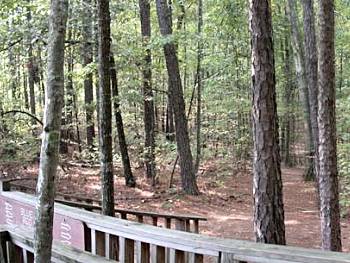 |
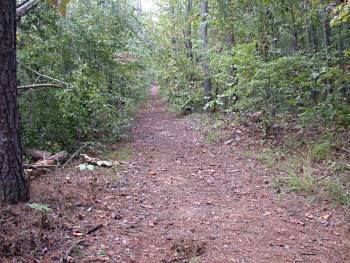 |
|
|
(10-02) "The Ravine" at Pickett's Mill. This is the head of the
ravine where the heaviest Federal casualties were inflicted. It slopes
down to the right (northeast) toward Pickett's Mill Creek. Confederate
General Hiram S. Granbury's troops were positioned in the foreground and
withstood three Federal assaults from the bottom of the ravine without
entrenchments |
(10-02) Original war-time road at Pickett's Mill |
|
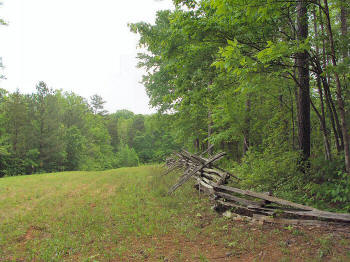 |
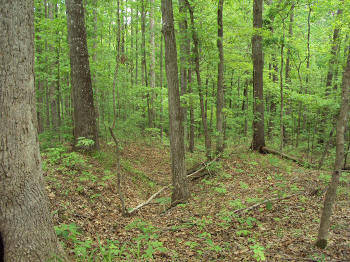 |
|
|
(6-2013)
Enlarge Pickett's Mill was one of
three separate small battles along what came to be known as the New Hope
Church line: New Hope Church, fought in a heavy rainstorm on May 25;
Pickett's Mill, May 27; and Dallas, the following day, May 28.
Unfortunately, only Pickett's Mill has survived development and remains
the tangled, vine-covered hills and ravines, broken occasionally by
clearings like that above, that it was during the battle |
(6-2013)
Enlarge The battle began as another
effort by Sherman to outflank the position at New Hope Church by
"swinging" to the north and then east around the Confederate right
flank. Cleburne's division was rushed from near the center of Joseph
Johnston's battle line to intercept this attempt made by Howard's IV
Corps. Unfortunately for the Federals, Howard's reconnaissance and
preparations for the attack were as poor as they had been a year earlier
at Chancellorsville. He used an unwieldy assault formation similar to
the ones later ordered by Sherman at Kennesaw Mountain, and with equal
lack of success |
|
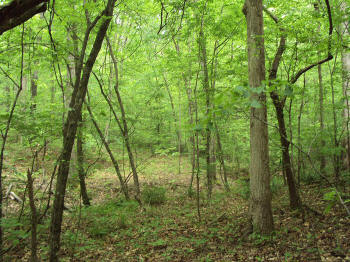 |
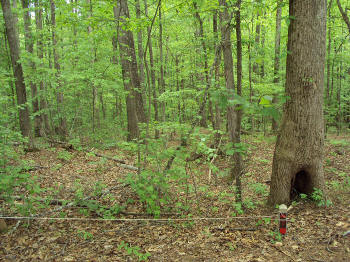 |
|
|
(6-2013)
Enlarge The initial attack was made
solely by the brigade of Brig, Gen. William B. Hazen, a member of whose
staff and later the famous novelist Ambrose Bierce later wrote of as The
Crime at Pickett's Mill. Moving through underbrush like that seen above,
the regiments were soon entangled, funneling into a deep ravine that
lead directly to Hiram Granbury's waiting Texas Brigade of Cleburne's
Division, arrived just in time. Thinking they had surprised the
Confederates before they had a chance to throw up breastworks, according
to Cleburne's official report, they shouted, "Ah, da_n you, we have
caught you without your logs now!" Cleburne went on to say, Granbury's
men, needing no logs, were awaiting them... with calm determination, and
as they appeared upon the slope slaughtered them with deliberate aim.
The piles of his dead on the front... were a silent but sufficient
eulogy upon Granbury and his noble Texans |
(6-2013)
Enlarge Meanwhile, farther to the
Confederate right, Mark Lowery's Alabama Brigade arrived and began to
throw up breastworks fronting a large open cornfield on the side of a
hill, the area above. Another Union brigade was approaching here,
downhill through the corn, but were thrown into confusion in part by the
fire of Confederate dismounted cavalry across Pickett's Mill Creek on
their left flank. Foolishly, the brigade commander sent a regiment
across the creek near the mill ( next photo ) to deal with it instead of
concentrating on Lowery, giving him time to prepare. By the time the
cavalry were driven back, Hazen's attack had collapsed and any hope of
coordination was lost |
